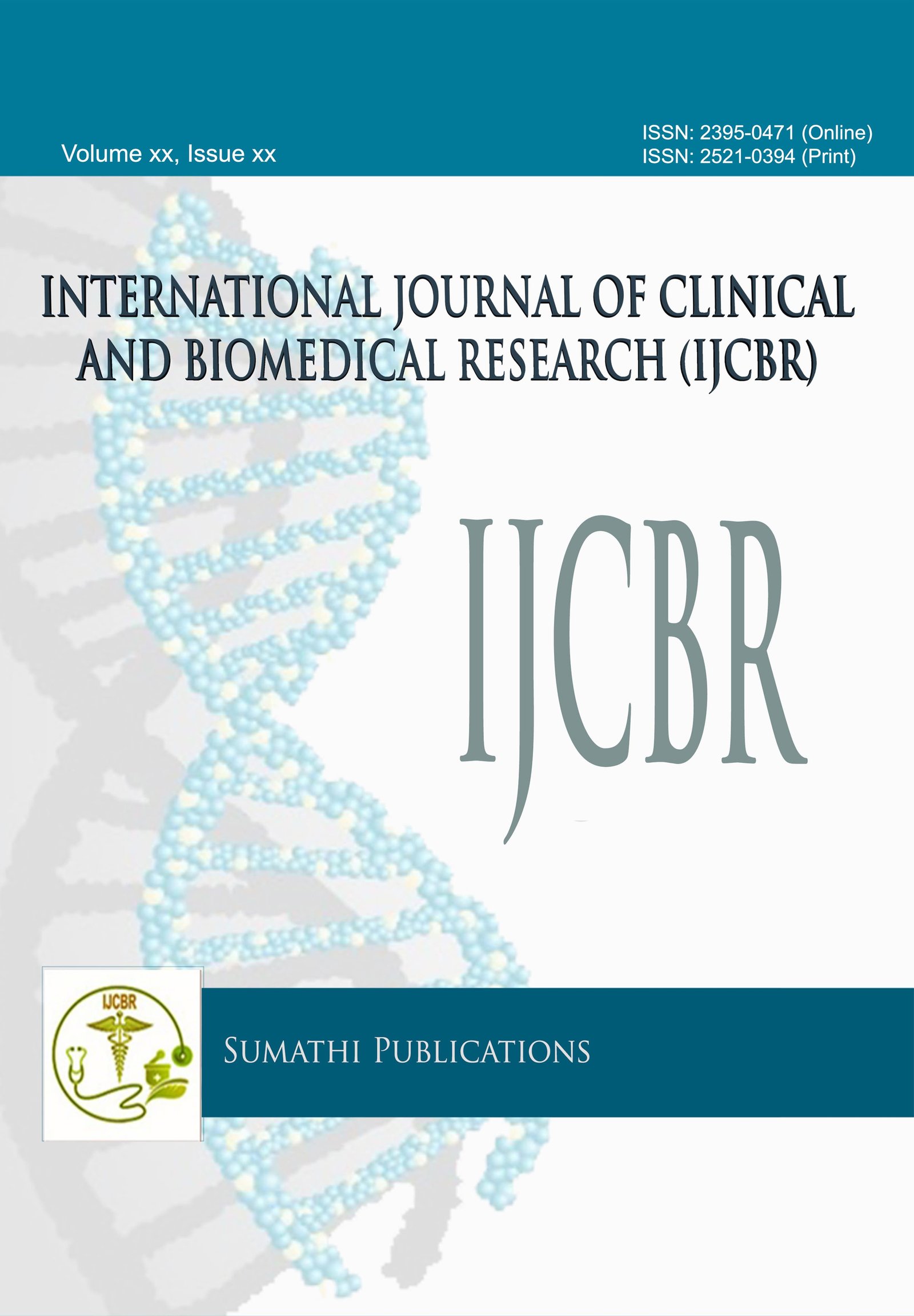COMPARATIVE STUDY OF PULMONARY FUNCTION TESTS WITH MICROVASCULAR COMPLICATIONS, RETINOPATHY AND NEPHROPATHY IN TYPE 2 DIABETES MELLITUS AND CORRELATION WITH DURATION OF DIABETES
DOI:
https://doi.org/10.5455/ijcbr.2018.41.04Abstract
Background: The major morbidity in type 2 diabetes mellitus is due to microangiopathic and macroangiopathic complications. Though lung has been widely acknowledged to be a target organ in diabetes mellitus, its correlation and severity of involvement to other microvascular complications has not been studied. Aim: To study pulmonary function tests in type 2 diabetes mellitus and evaluate association of PFTs with microvascular complications, retinopathy and nephropathy and further assess the relationship of retinopathy, nephropathy and lungs with duration of diabetes. Methods: A cross sectional study was carried out in 100 male type 2 diabetic patients attending diabetic clinic in tertiary hospital. 100 non- diabetic subjects were selected as control from general population. PFTs tests were performed. Results were interpreted by one way ANOVA test. Association of PFT parameters FVC, FEV1, FEV1% in type 2 diabetic patients with nephropathy and retinopathy was analysed by Pearson's correlation coefficient. The patient population was subdivided according to the duration of diabetes into 2 groups; less than 10 years of illness and more than 10 years. Relationship of each microvascular complications, retinopathy, nephropathy and pulmonary function tests with duration of diabetes was assessed by one- way ANOVA test. Results: There was a significant decrease in PFT parameters as compared to non-diabetic controls. The PFTs in type 2 diabetic subjects with nephropathy showed decline in FVC, FEV1, FEV1%, however association of these parameters with GFR and microalbuminuria was not significant. Also, a similar decline of PFT parameters was observed with increasing grades of retinopathy, though not significant. There was a significant positive correlation of retinopathy with microalbuminuria and GFR (nephropathy) in type 2 diabetic subjects. Also, there was significant association of microalbuminuria, GFR and retinopathy with increase in duration of diabetes. On the contrary the decline in FVC, FEV1, FEV1% with duration of diabetes was not statistically significant. Conclusion: Type 2 diabetic patients with poor glycaemic control and longer duration of diabetes history had significant correlation with microvascular complications, nephropathy and retinopathy as compared to pulmonary complications (PFT parameters). It is highly suggestive that diabetic patients with retinopathy must be screened for nephropathy.
Downloads
Downloads
Published
Issue
Section
License
The journal allows the author(s) to hold the copyright without restrictions and will retain publishing rights without restrictions.
The submitted papers are assumed to contain no proprietary material unprotected by patent or patent application; responsibility for technical content and for protection of proprietary material rests solely with the author(s) and their organizations and is not the responsibility of the journal. The main (first/corresponding) author is responsible for ensuring that the article has been seen and approved by all the other authors. It is the responsibility of the author to obtain all necessary copyright release permissions for the use of any copyrighted materials in the manuscript prior to the submission.
What are my rights as an author?
It is important to check the policy for the journal to which you are submitting or publishing to establish your rights as
Author. Journal's standard policies allow the following re-use rights:
- The journal allows the author(s) to hold the copyright without restrictions.
- The journal allows the author(s) to obtain publishing rights without restrictions.
- You may do whatever you wish with the version of the article you submitted to the journal.
- Once the article has been accepted for publication, you may post the accepted version of the article on your own personal website, your department's website or the repository of your institution without any restrictions.
- You may not post the accepted version of the article in any repository other than those listed above (i.e. you may not deposit in the repository of another institution or a subject-matter repository) until 12 months after publication of the article in the journal.
- You may use the published article for your own teaching needs or to supply on an individual basis to research colleagues, provided that such supply is not for commercial purposes.









